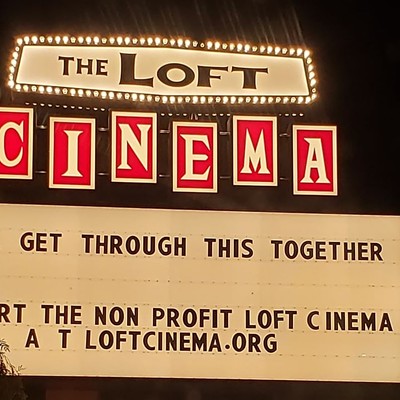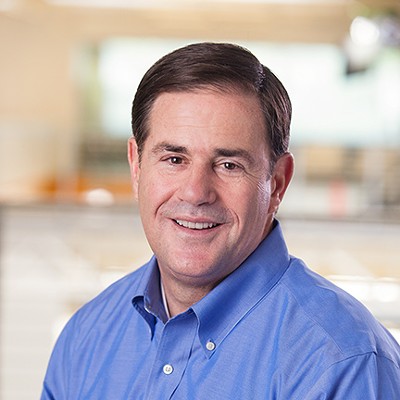Last year, the big scandal at the Arizona Legislature revolved around the revelations that thousands of reports to Child Protective Services had gone uninvestigated.
Lawmakers, who had cut back on safety-net programs designed to prevent cases of neglect and abuse, moved to completely revamp CPS, removing it from its position within the Department of Economic Security and creating a new, cabinet-level Division of Child Safety.
They also agreed to try to restore some programs that were designed to prevent reports of child neglect, such as state-subsidized daycare.
But now, Gov. Doug Ducey has proposed once again eliminating the state's general-fund support of subsidized daycare, suggesting it should go from $4 million in current budget year to zero.
"We view that as a mistake," says Dana Naimark of the Children's Action Alliance. "Certainly, that $4 million was part and parcel of the state's handling of the CPS crisis. There was a recognition that the lack of affordable child care was a contributing factor to the skyrocketing reports of child neglect."
In Ducey's budget proposal, administration officials say they anticipate more dollars from the federal government to make up the difference, but Naimark is skeptical.
"We don't see the math working out exactly the way he's saying," Naimark says. "We are getting new federal dollars, but we also have new federal requirements that come with that money. There's a whole set of expectations. But let's say we are getting $4 million more in federal funds. We still shouldn't be cutting back. We cut $80 million. We got $4 million back to take a tiny step forward. There's no reason to go back on that now."
Ducey spokesman Daniel Scarpinato says that with the federal government providing more funding, the state should be able to add more children to the program and work toward eliminating the waiting list that parents now find themselves on.
"We're going to be able to serve more kids under what we've built out in our budget," Scarpinato says. "We're going to be able to serve a lot of the folks who are on the waiting list. There are about 4,400 on the waiting list and we'll be able to make a big dent in that and increase a program that's good for kids and good for the state."
State-subsidized daycare took off around the country in the mid-'90s as part of a deal between President Bill Clinton and the GOP-controlled Congress: In order to get more people off welfare, the federal government agreed to provide subsidies for working women to put their kids in daycare programs, as long as states kicked in some local matching funds. Without reliable childcare, a parent can't hold down a job—and given the huge costs of daycare (which can cost more than college tuition), it doesn't make much economic sense for someone to take a job if it's going to cost most of their paycheck just to keep their kid in a safe place while they're on the job.
Childcare remains a vital issue for single moms. And in Arizona, single moms are most definitely struggling: The U.S. Census estimates that nearly 47 percent of single moms with kids under 6 years old lived below the poverty level, which makes it impossible to afford daycare along with rent, food, clothes and other basic expenses.
The state used to provide more than $80 million a year to support state-subsidized daycare, according to Naimark. But when GOP lawmakers and former Gov. Jan Brewer slashed the state's budget, the state cut off all general-fund dollars and put federal matching funds at risk.
Some of that funding got picked up by First Things First, an independent state agency created by voters and funded through a tobacco tax. When the proposition was on the 2006 ballot, advocates pushed the idea that the First Things First program would fund programs where the state was not providing services so it would supplement rather than supplant state funding.
But now, First Things First is now spending tens of millions of dollars a year on programs the state used to fund, including subsidizing childcare so that the state can continue to receive federal matching funds. In the current fiscal year, the organization is contributing as much as $34 million while the state was scheduled to provide $4 million—the funding that Ducey now wants to cancel.
Naimark says there were parts of Ducey's proposed budget that were encouraging, including higher stipend rates for foster families in the hope that kids can be moved out of group homes and into families, as well as a proposal to reduce the number of juveniles in state custody by requiring counties to keep custody of more kids.
"It's obviously a budget issue for the counties, but really, it's better for kids to be in their own communities and getting community-based services," Naimark says.
But Naimark has concerns about many of the other proposals in Ducey's budget.
"Our biggest concern is the longer-term trajectory," Naimark says. "Gov. Ducey is realigning expenditures to meet available revenues. These are permanent realignments. That means permanent reductions for the universities, continuing down the path of expanding prisons, permanent underfunding of K-12 compared to inflation, and allowing tax cuts and tax credits to grow with little accountability or control."

















